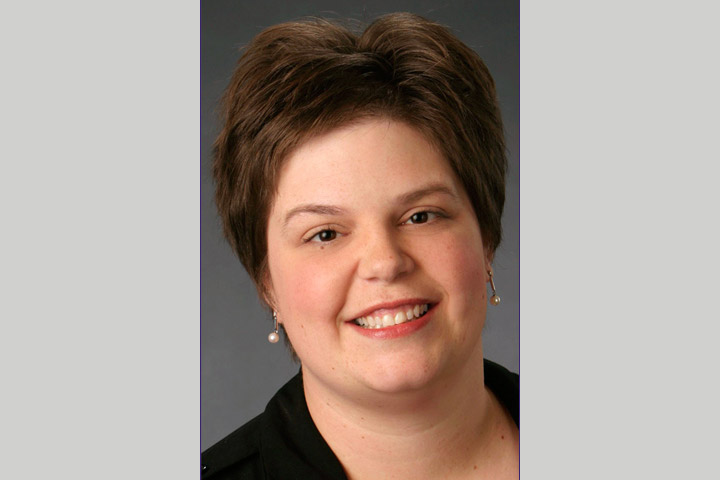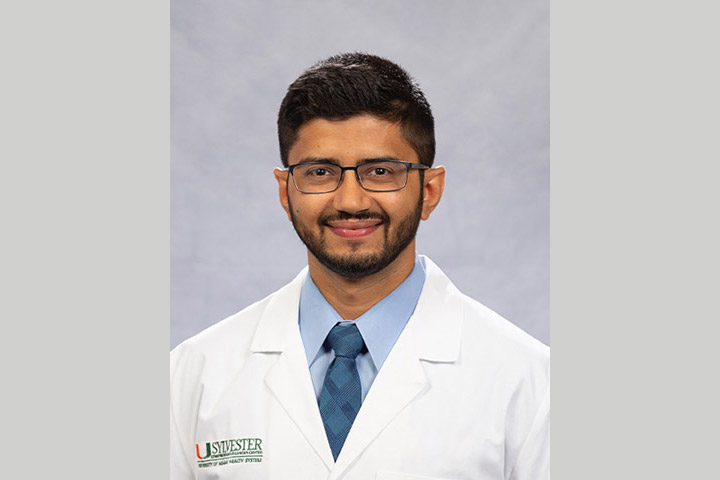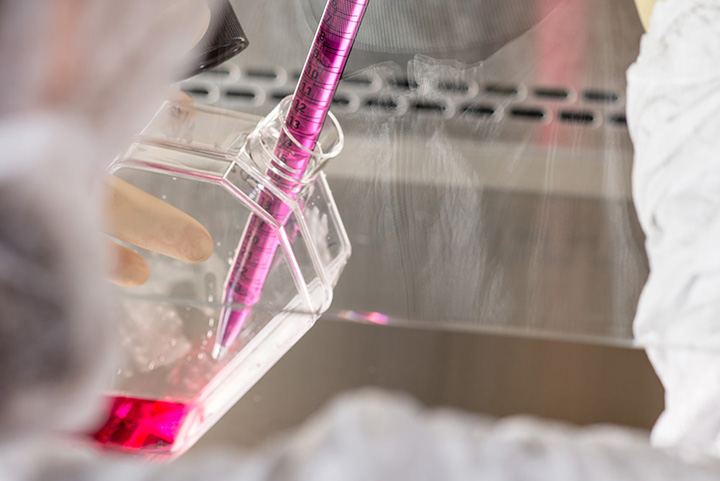Finding More Targets for Pancreatic Cancer Treatment

Developing new molecularly targeted treatments for patients who harbor certain actionable genetic alterations is the focus of significant pancreatic cancer research—as is finding new targets to hopefully bring those life-extending treatments to more people.
One such alteration gaining traction is called an NRG1 fusion. Although NRG1 gene fusions are rare, research is showing they are potentially actionable oncogenic drivers that are present in some solid tumors, including pancreatic cancer.
Up to about 6 percent of pancreatic cancer tumors harbor NRG1 gene fusions, says gastrointestinal oncologist Noelle LoConte, M.D., who leads the University of Wisconsin’s Carbone Cancer Center’s Outreach , Cancer Control and Population Sciences division and its Data and Safety Monitoring Committee (Madison). “We are always looking to find new targets in pancreatic cancer and although NRG1 fusions may only represent a relatively small percentage of patients, treatment inhibiting NRG1 fusion could potentially make a big difference for them.”
That’s because patients with NRG1 fusions “have a tendency to do worse than other pancreatic cancer patients,” LoConte continues. “Pancreatic cancer is just a terrible disease and it is tough to treat. The good news is that we are making progress. What we know is that patients with NRG1 fusions just don’t respond well at all to our standard approaches, whether that’s chemotherapy or chemotherapy and a checkpoint inhibitor.
“They have worse overall survival and worse disease-free survival. So it stands to reason if there is a treatment aimed at potentially inhibiting the signaling of NRG1 fusions, it needs to be explored.” NRG1 fusions can also emerge at the time of progression and may be the driving cause of acquired resistance to a previous targeted therapy, she adds.
An NRG1 Fusion Primer
NRG1 stands for neuregulin-1. When all is working as it should in your body, your cells use the information contained in the NRG1 gene to create proteins. These NRG1 proteins bind to a receptor called HER3, which then “sends a signal to the cell to grow and divide in a normal way,” explains LoConte. But sometimes cellular hiccups happen and a protein winds up containing parts of not only an NRG1 protein but also another protein. That’s the fusion, hence the name NRG1 gene fusion. This gene fusion will still bind to HER3, but its role in activating HER3 becomes unregulated, leading to uncontrolled cell division and growth and a potential malignancy.
The CRESTONE Study
A new phase II multisite study called CRESTONE is focusing efforts on a drug designed to stop NRG1 fusion signaling. The trial is sponsored by biotechnology company Elevation Oncology (New York).
The primary objective of the CRESTONE study is to describe the anti-tumor activity and tolerability of a monoclonal antibody treatment called seribantumab in patients with an NRG1 gene fusion. The safety profile and pharmacokinetics (how the drug is absorbed, distributed, metabolized, and excreted) are well characterized through prior clinical testing in more than 800 patients, according to the company. “Basically, seribantumab targets HER3, which is kind of a cousin of HER2,” says LoConte. “Once administered, it will stop HER3 activation and signaling if an NRG1 fusion is attached to it. It just stops the process of uncontrolled cell division and growth, which is the basis of cancer.” In addition, she points out, “The drug has a good safety profile, so that’s a step in the right direction.”
To be eligible for the study patients must be age 18 years old and older, and have any advanced solid tumor with an NRG1 fusion, as determined by testing at a local CLIA or similarly accredited lab. The trial hopes to recruit 75 patients who will be divided into three cohorts. All study participants will receive seribantumab.
The primary endpoint is objective response rate by independent, central radiologic review. Secondary endpoints include duration of response, safety, progression-free survival, overall survival, and clinical benefit rate.
To detect NRG1 gene fusions patients must have an RNA-based next generation sequencing test, which looks at a tumor’s RNA instead of its DNA. “There has been a big push for genetic testing for pancreatic tumors ever since the NCCN (National Comprehensive Cancer Network) came out with their recommendations,” says LoConte. “Generally, only DNA is tested since RNA sequencing isn’t a part of current diagnostic genetic testing. But I think as the science moves forward in terms of targeted approaches, we are going to be looking a lot more at RNA.”
It’s important for patients to know today that molecularly testing is extremely important, she adds. “The recommendations are clear: all people diagnosed with pancreatic ductal adenocarcinoma at any age have genetic counseling and testing,” Lo Conte says. “Most people aren’t going to have an alteration, but for those that do, the finding can help tailor treatment.” And, she notes, if genetic testing reveals an inherited factor, family members can also benefit.
A Look Forward
Although NRG1 fusion research is in its early stages, LoConte is hopeful the body of knowledge will be increased through this study as well as others. “We do a study to find answers,” she says. “And what we know so far from prior research in pancreas cancer is that a single drug is not enough, so we tested combination treatments and moved the field forward. I like the concept and the idea of this study, but we won’t have any answers for a while.
“What I do know is that incremental steps forward are important. If someone has a two-month progression-free survival, that may not seem like a lot, but it can mean the world to that patient. I’ve learned not to judge because I’ve had patients tell me just keep me alive a few more months so I can see my granddaughter graduate from college or keep me alive long enough for my vote to count.
“Sure, I want a lot more for my patients, all of us do. And the hope from studies like these is that we can provide something for them that gives them the time they need.”






